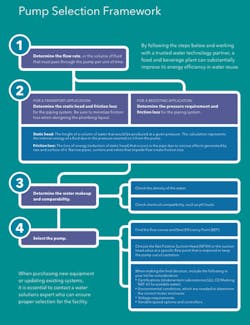In March 2015, the United Nations World Water Assessment Program reported the world will face a 40 percent water shortfall in 15 years, and the World Economic Forum recently called a shortage of freshwater the top global risk in terms of impact. With these dire predictions in the news, preserving this increasingly precious natural resource is becoming a priority for businesses around the globe.
Food and beverage operations use large amounts of water throughout their facilities — as makeup water for cooling towers and boilers, for washing equipment and in producing goods. Water can be delivered through a supply connection from a municipal system; extracted from the local environment’s natural water supply, such as a ground well; or by reclaiming existing wastewater from the facility’s processes with advanced reuse treatment, lowering the plant’s freshwater requirements.
The practice of treating and reusing water in food and beverage operations can have numerous benefits:
- Deliver reduced water usage ratios
- Provide decreased supply risk
- Contribute to cost savings
- Help meet sustainability goals
Water reuse is one method businesses can employ to reduce source water risk, enhance sustainability practices and better control water quality.
Selecting the right equipment to meet a company’s water reuse requirements is important for maximizing energy savings and decreasing a facility’s freshwater footprint. Pumps play a key role in reuse systems, and proper pump selection is critical to ensure that the system is efficient.
When installed in a food and beverage facility, pumps serve one of two purposes in a reuse system: transportation or pressure boosting. Water must be transported for treatment, storage or use. Some treatment technologies require pressure boosting, including reverse osmosis (RO), in which specific pressures are required to move water through RO membranes to remove contaminants and particulates.
The pump and piping selection can have a considerable impact on the energy consumed during the system’s life. Pumps should be selected to operate at their best efficiency point (BEP), and the plumbing should be engineered to minimize friction. A water reuse system using improperly sized piping and pumps can increase energy consumption by an estimated 200 to 300 percent.
Steps for correct pump selection
By following the steps described in this section, a business can substantially improve its energy efficiency in water reuse and select the ideal pump for the application.
Define objectives. When deciding what type water reuse system is needed in a facility, a plant must define its objectives from sustainability and cost perspectives.
Select applications. Next, plant owners and operators should define the applications for which the water will be used. Starting with high-volume reuse applications is best because they have lower water quality requirements, therefore requiring less treatment. By following this approach, the facility will achieve the greatest return on its investment.
Determine treatment levels. Finally, determine the treatment levels required for the selected applications by measuring the current water quality to establish a baseline and then compare that to the quality level required for the selected applications.
Pump selection framework. By following the steps in Figure 1 and working with a trusted water technology partner, food and beverage plants can substantially improve their energy efficiency in water use and reduce their freshwater footprints.
Figure 1. The pump selection process. Graphic courtesy of Xylem Inc.
Conclusion
Equipment is one component that makes up a water reuse system. By taking a holistic approach to water-related issues, businesses can realize many benefits while using water responsibly and efficiently.
Nate Maguire is the Americas business unit director, industry and agriculture, for Xylem’s applied water systems business unit.
Xylem’s global brands provide products, comprehensive solutions and application expertise in more than 150 countries. For more information, visit www.xyleminc.com/food.



